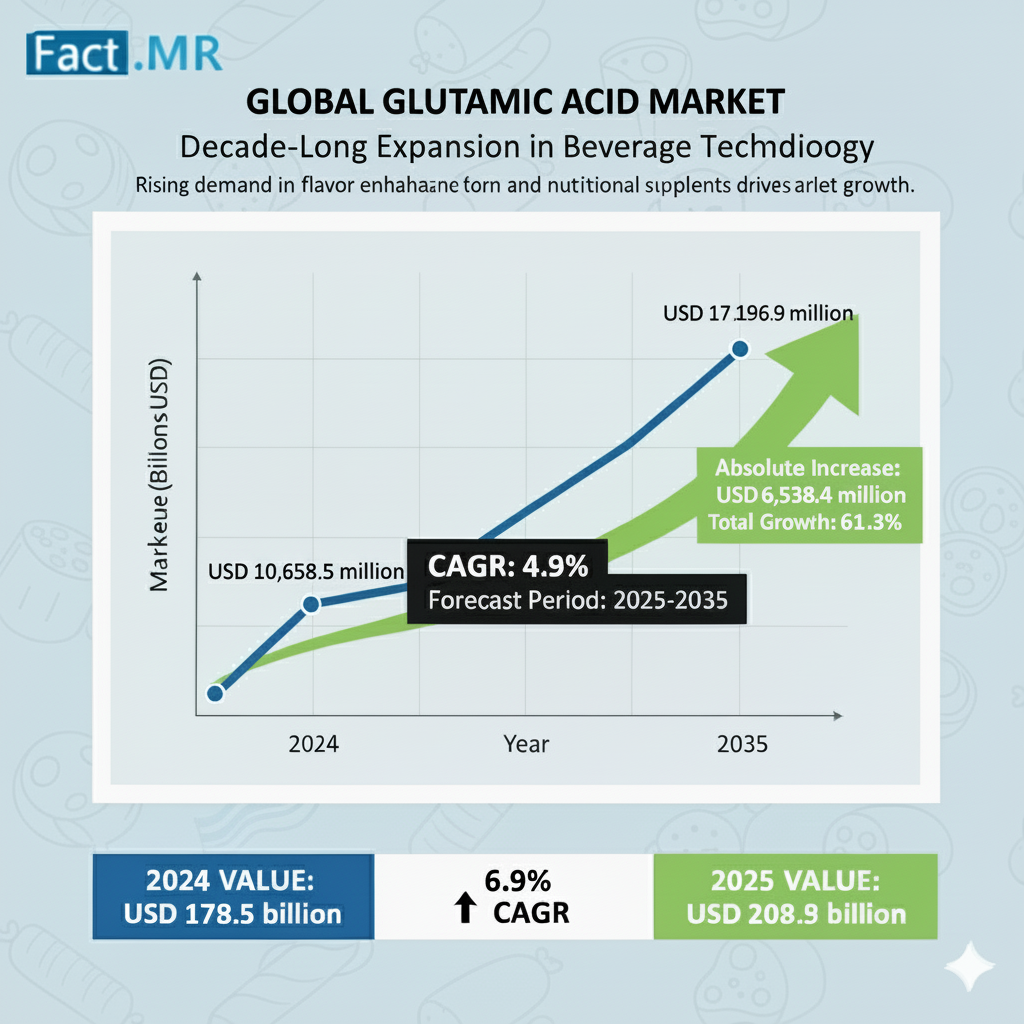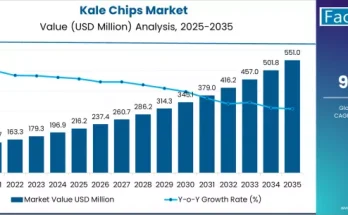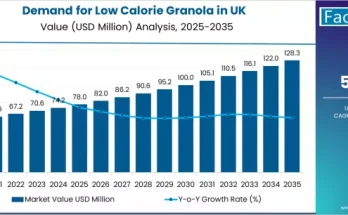The global glutamic acid market was valued at USD 10,658.5 million in 2024. It is projected to reach USD 17,196.9 million by 2035, reflecting a CAGR of 4.9% over the assessment period 2025-2035.The glutamic acid industry continues to grow well due to diversified usage sectors, which include food, drugs, and animal feed. It is a naturally occurring amino acid that provides flavor enhancement and acts as a building block for proteins in foods.The product has been widely used as a flavoring agent in the food industry, particularly in processed and packaged foods, besides improving both taste and appeal. In the pharmaceutical industry, it is essential in medicine and supplement development for metabolic, neurological, and recovery-related health issues.
Glutamic Acid Market Overview by Product Type:
The market is segmented by type into L-Glutamic Acid and DL-Glutamic Acid, with further categorization by grade: food grade, pharmaceutical grade, and feed grade. L-Glutamic Acid dominates due to its natural occurrence and widespread use as a building block for proteins, while food grade leads in volume, driven by its role in flavor enhancement and clean-label formulations.
Food grade glutamic acid is witnessing explosive demand as consumers prioritize nutrient-rich, low-sodium, and umami-enhanced products. Widely incorporated as monosodium glutamate (MSG) in processed foods, snacks, soups, sauces, and ready-to-eat meals, it aligns with global trends toward convenient yet healthier options. The clean-label movement and preference for natural flavor amplifiers are accelerating adoption in organic and functional food lines.
Pharmaceutical grade glutamic acid commands a premium position, valued for its high purity and critical applications in drug formulations, nutritional supplements, and therapies targeting metabolic, neurological, and recovery-related conditions. Rising incidences of chronic diseases, aging populations, and biotechnology advancements in vaccines and therapeutic proteins are propelling this segment. Stringent regulatory compliance ensures its reliability in intravenous solutions and personalized medicine.
Feed grade glutamic acid supports livestock productivity, enhancing growth rates and feed efficiency amid surging global meat demand. Its integration into animal nutrition formulations is vital for sustainable agriculture, particularly in high-population regions.
Glutamic Acid Market End-User Insights:
End-use industries span food & beverage, pharmaceuticals, agriculture, and personal care. In food & beverage, glutamic acid drives 45% value share in 2025 through flavor enhancer applications, amplifying umami in processed meats, dairy alternatives, and ready-to-drink (RTD) beverages. The boom in functional drinks, protein shakes, and low-sodium diets is a key accelerator.
Pharmaceuticals leverage glutamic acid for neural health supplements and metabolic treatments, supported by increasing health awareness. Agriculture benefits from its role in animal feed additives, boosting protein synthesis and productivity in poultry, swine, and aquaculture. Emerging personal care applications, including cosmetics and nutraceuticals, highlight its versatility in bioplastics and skin health formulations.
Glutamic Acid Market Regional Analysis:
Regional dynamics reveal high-growth opportunities. East Asia holds a commanding 35.8% revenue share in 2025, led by Japan and China, with projected CAGRs of 6.2% and 6.1%, respectively, through 2035. Japan’s export prowess in high-purity glutamic acid strengthens Asia-Pacific dominance, fueled by advanced manufacturing and demand for savory seasonings.
South Asia & Pacific, particularly India, emerges as a hotspot with a 6.7% CAGR, driven by expanding retail networks, urbanization, and rising consumption of packaged foods. Improved infrastructure in tier-2 cities and e-commerce penetration enhance accessibility.
Mature markets like the U.S. (2.8% CAGR) and Germany (3.1% CAGR) emphasize premium pharmaceutical and food-grade variants, supported by sustainability initiatives and low-sodium innovations. North America and Western Europe prioritize regulatory compliance and clean-label products, while Latin America and Middle East & Africa show potential from industrialization and protein-rich diet shifts.
Glutamic Acid Market Recent Developments and Competitive Landscape:
The competitive arena is dynamic, with Tier 1 leaders like Ajinomoto Co., Inc., Evonik Industries AG, and Kyowa Hakko Bio Co., Ltd. investing heavily in R&D for sustainable production and innovative applications. These giants command global supply chains, focusing on cost-efficient fermentation technologies and eco-friendly processes.
Tier 2 players such as Bachem AG target niche regional markets with quality-driven offerings and strategic partnerships. Recent moves underscore expansion: In September 2024, Ajinomoto Co., Inc. partnered with Danone on GHG emission reductions in dairy supply chains, integrating glutamic acid in sustainable formulations. In November 2024, Evonik Industries AG expanded its Nanjing plant for specialty amines, bolstering Asia-Pacific capacity and polyurethane additives with glutamic acid derivatives.
Other key players include Akzo Nobel N.V., Bio-chem Technology Group Company, Hefei TNJ Chemical Industry Co., Ltd., Iris Biotech GmbH, Ningxia EPPEN Bioengineering Stock Co., Ltd., Sichuan Tongsheng Amino Acid Co., Ltd., and Suzhou Yuanfang Chemical Co. Ltd. Strategies encompass acquisitions, vertical integration, and R&D in biobased alternatives to capture emerging demands in plant-based foods and nutraceuticals.
Glutamic Acid Market Outlook and Key Takeaways:
The global glutamic acid market is set for sustained expansion, climbing from USD 10,658.5 million in 2024 to USD 17,196.9 million by 2035 at a 4.9% CAGR. Flavor enhancement in processed foods and RTD beverages will lead, complemented by pharmaceutical and feed applications amid health, convenience, and sustainability trends.
Asia-Pacific will drive the bulk of growth, with India, Japan, and China as frontrunners. Success hinges on innovation in low-sodium alternatives, clean-label compliance, and green manufacturing. Leaders prioritizing R&D, regional expansions, and strategic alliances will solidify market positions in this evolving landscape.
Browse Full Report-https://www.factmr.com/report/glutamic-acid-market


